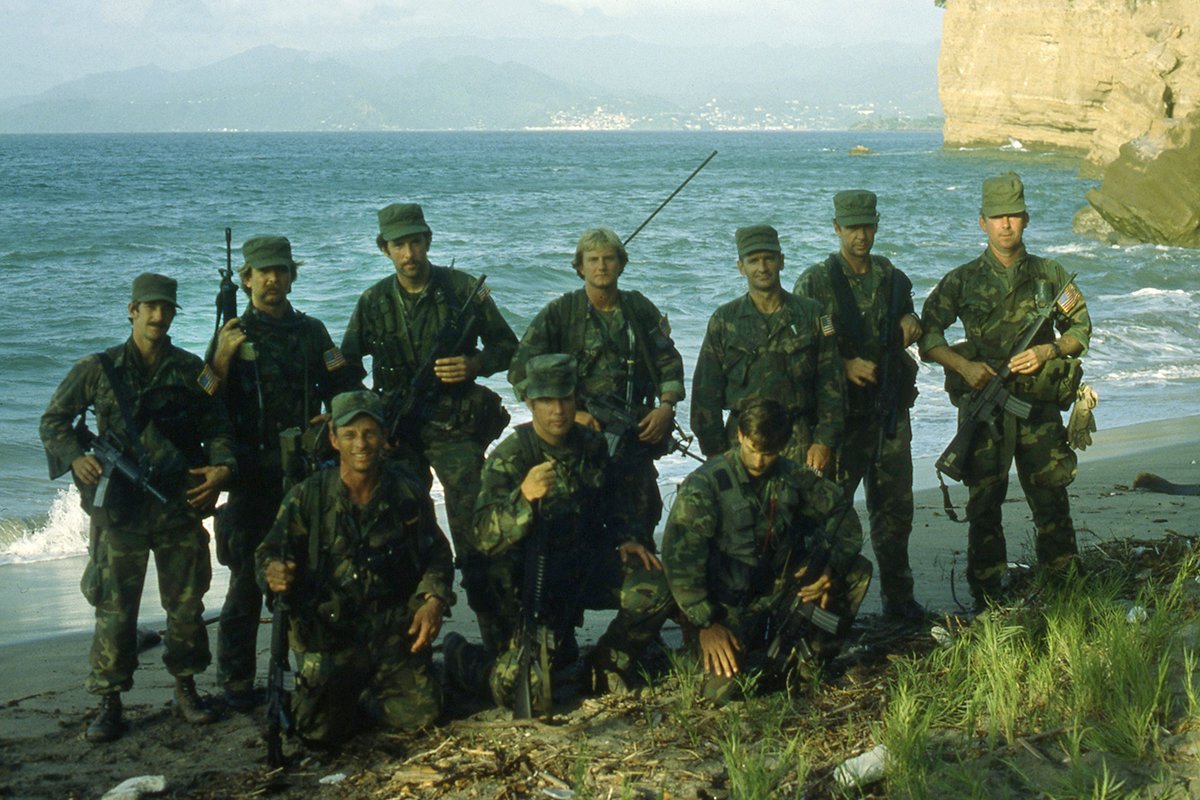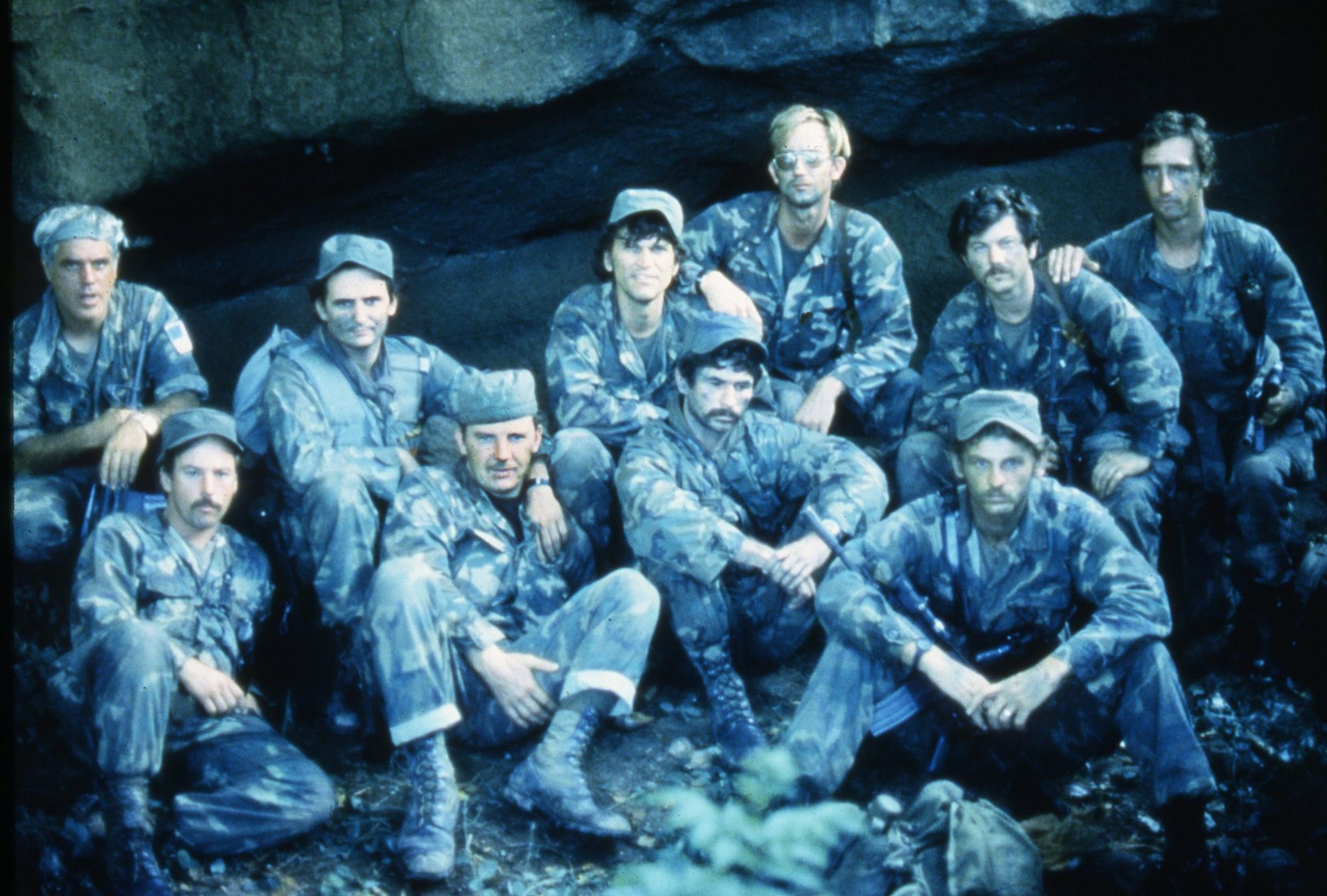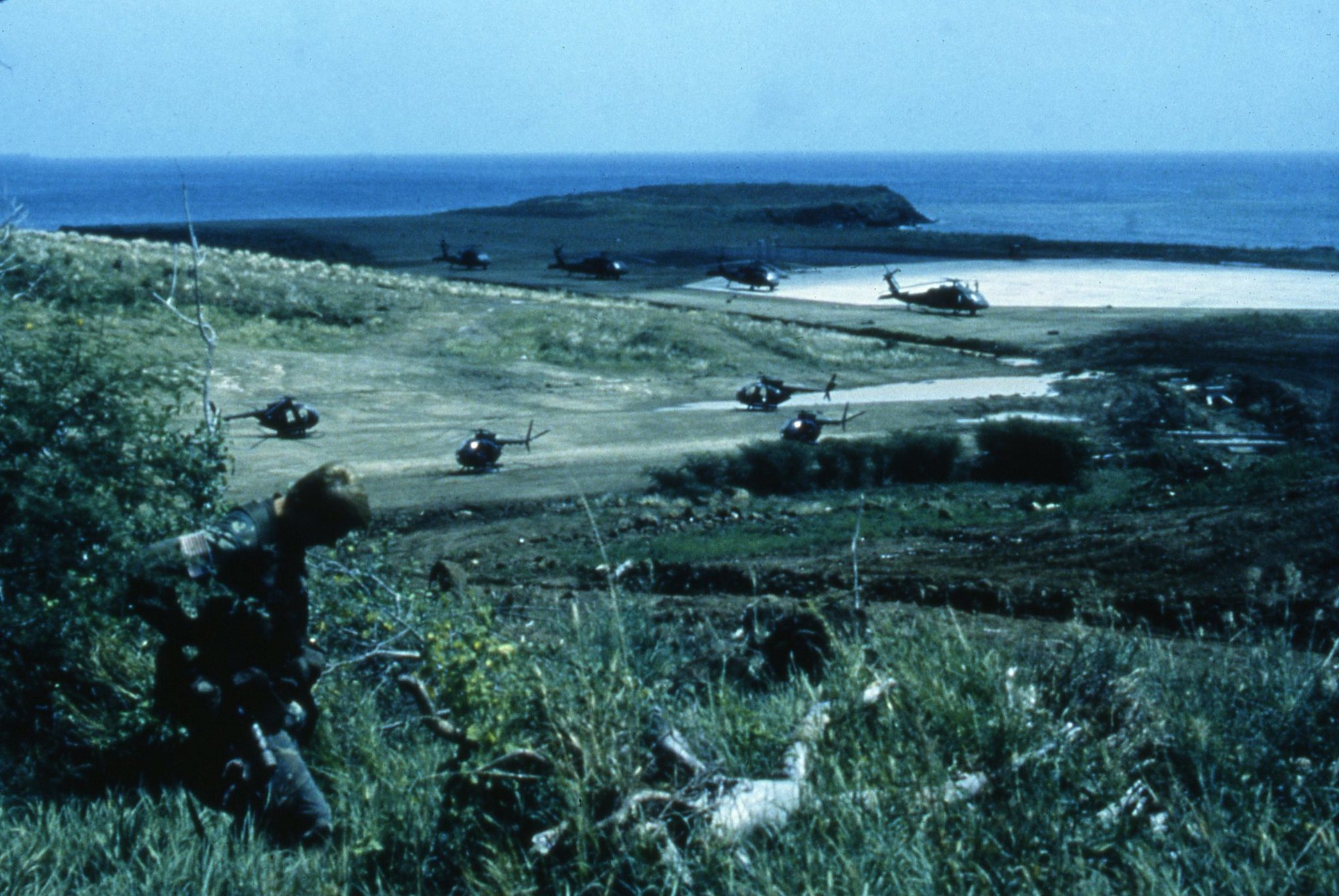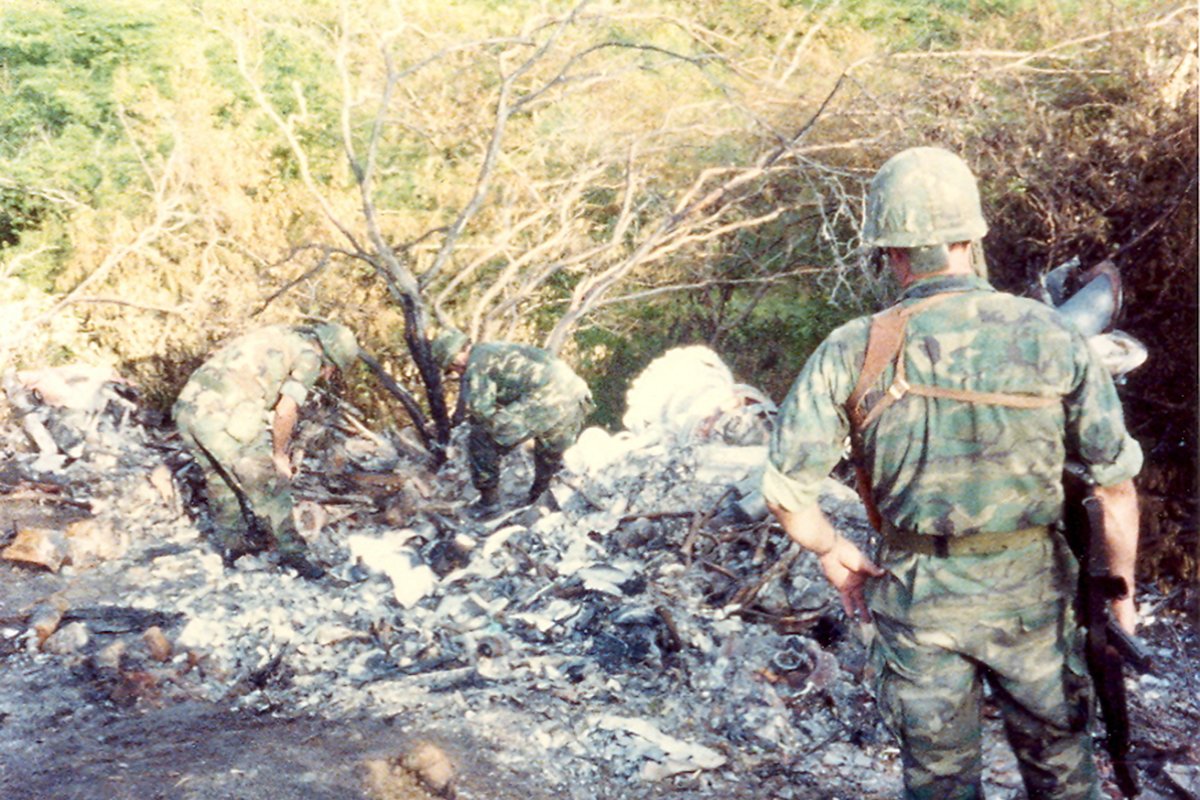Assault on Richmond Hill Prison: A Delta Force Operation Gone Wrong in Grenada

Members of Delta Force’s B Squadron pose for a photograph along the shore in Grenada after the assault on Richmond Hill Prison. Sgt. First Class Mike Vining was the only Delta operator to bring a camera for the invasion. He took this picture with an old point-and-shoot camera using Ektachrome film. This photograph has never been published before now. Photo courtesy of Mike Vining.
On the morning of Oct. 25, 1983, nine UH-60 Black Hawk helicopters departed their forward staging base on the island of Barbados. They were headed toward communist strongholds situated in the Caribbean nation of Grenada. The first six helicopters carried 44 operators from Delta Force’s B Squadron — the US Army’s crack-shot counterterrorism team specializing in hostage rescue — while the remaining three were from SEAL Team 6, the Navy’s special missions unit.
While the SEALs moved off to secure Grenada’s only radio tower and extract British Governor General Sir Paul Scoon from house arrest, the Army Special Forces soldiers continued onward to assault Richmond Hill Prison. The hilltop facility housed political prisoners detained after a bloodless 1979 coup d’etat.
Aboard the fifth helicopter in the formation was Army Sgt. 1st Class Mike Vining, a 33-year-old explosive ordnance disposal specialist and a founding member of the “Unit.” The plan for his five-man Delta Force element was to insert by fast-rope and secure the guards’ barracks located outside the prison. This marked the first time the US had used the fast-rope insertion method, which had been perfected by the British Special Air Service, in combat.

As the helicopters flew over the lush green jungle to reach the lower ridge where their objective was located, gunfire erupted, and tracers filled the air. Approximately 300 yards away, overlooking Richmond Hill Prison on a higher ridge, were two Soviet-built ZSU-23-2 (twin 23 mm) anti-aircraft weapons. Immediately, the door gunner on Vining’s left took a round and could not provide effective suppressing fire.
The operators didn’t have a blueprint of the prison layout, nor did they have air support. They’d effectively flown into their objective blind and were caught off guard.
Nevertheless, the pilots of the 160th Special Operations Aviation Regiment, more commonly known as Night Stalkers, adapted to the battle space. Two helicopters hovered over the prison while the remaining four craft, including Vining’s, hovered just outside the walls.

“We’re over the prison, and they were shooting at us from down below,” Vining told the Late Night History podcast. “The bullet holes were going through the bottom of the helicopter, and there was a toolbox there, so I sat on top of the toolbox to try to not get a bullet in my butt.”
The relentless anti-aircraft fire shot to pieces the cockpit of one of the American Black Hawks. The pilot was mortally wounded, and the co-pilot was also hit as their helicopter crashed.
“We just hovered there, took all this firepower, and then we pulled off and did a big circle,” Vining said. “And then as we were coming around and we’re going to go back to do it the second time, the other two helicopters that dropped the SEALs off [at the governor general’s residence] now joined us.”
The anti-aircraft fire was so intense that the helicopters were forced to land at the nearby airfield at Point Salines (now called Maurice Bishop International Airport). Upon inspection, only one of the helicopters was flyable.

“We put a couple teams in that helicopter, and we went to the crash site of the other helicopter, and we secured the crash site until we could get a medevac that came in off one of the Navy ships offshore,” Vining said. “I think we had about 19 members of Delta that were wounded during that engagement.”
While the assault force attempted to mobilize a ground assault on Richmond Hill Prison, they learned that the Grenadian guards had already released all the prisoners. The mission was over.
All Delta Force operators survived. However, Capt. Keith Lucas, a Night Stalker pilot, was killed in action, marking the unit’s first combat fatality. In 2021, Lucas was inducted into the US Army ROTC Hall of Fame.
Although the Delta Force operators didn’t succeed in their mission, Vining believes it could have been much worse. Had they used Vietnam-era Huey helicopters, they probably wouldn’t have survived the onslaught that the UH-60 Black Hawks were able to sustain and stay airborne through. At that time, the Black Hawk helicopter was unproven in combat. The airframe’s debut mission in Grenada proved its worth. Since Operation Urgent Fury, the code name for military action in Grenada, the UH-60 Black Hawk has remained the workhorse for US special operations forces to this day.
Read Next: 4 Badass Operators You Should Know More About

Matt Fratus is a history staff writer for Coffee or Die. He prides himself on uncovering the most fascinating tales of history by sharing them through any means of engaging storytelling. He writes for his micro-blog @LateNightHistory on Instagram, where he shares the story behind the image. He is also the host of the Late Night History podcast. When not writing about history, Matt enjoys volunteering for One More Wave and rooting for Boston sports teams.
BRCC and Bad Moon Print Press team up for an exclusive, limited-edition T-shirt design!
BRCC partners with Team Room Design for an exclusive T-shirt release!
Thirty Seconds Out has partnered with BRCC for an exclusive shirt design invoking the God of Winter.
Lucas O'Hara of Grizzly Forge has teamed up with BRCC for a badass, exclusive Shirt Club T-shirt design featuring his most popular knife and tiomahawk.
Coffee or Die sits down with one of the graphic designers behind Black Rifle Coffee's signature look and vibe.
Biden will award the Medal of Honor to a Vietnam War Army helicopter pilot who risked his life to save a reconnaissance team from almost certain death.
Ever wonder how much Jack Mandaville would f*ck sh*t up if he went back in time? The American Revolution didn't even see him coming.
A nearly 200-year-old West Point time capsule that at first appeared to yield little more than dust contains hidden treasure, the US Military Academy said.












